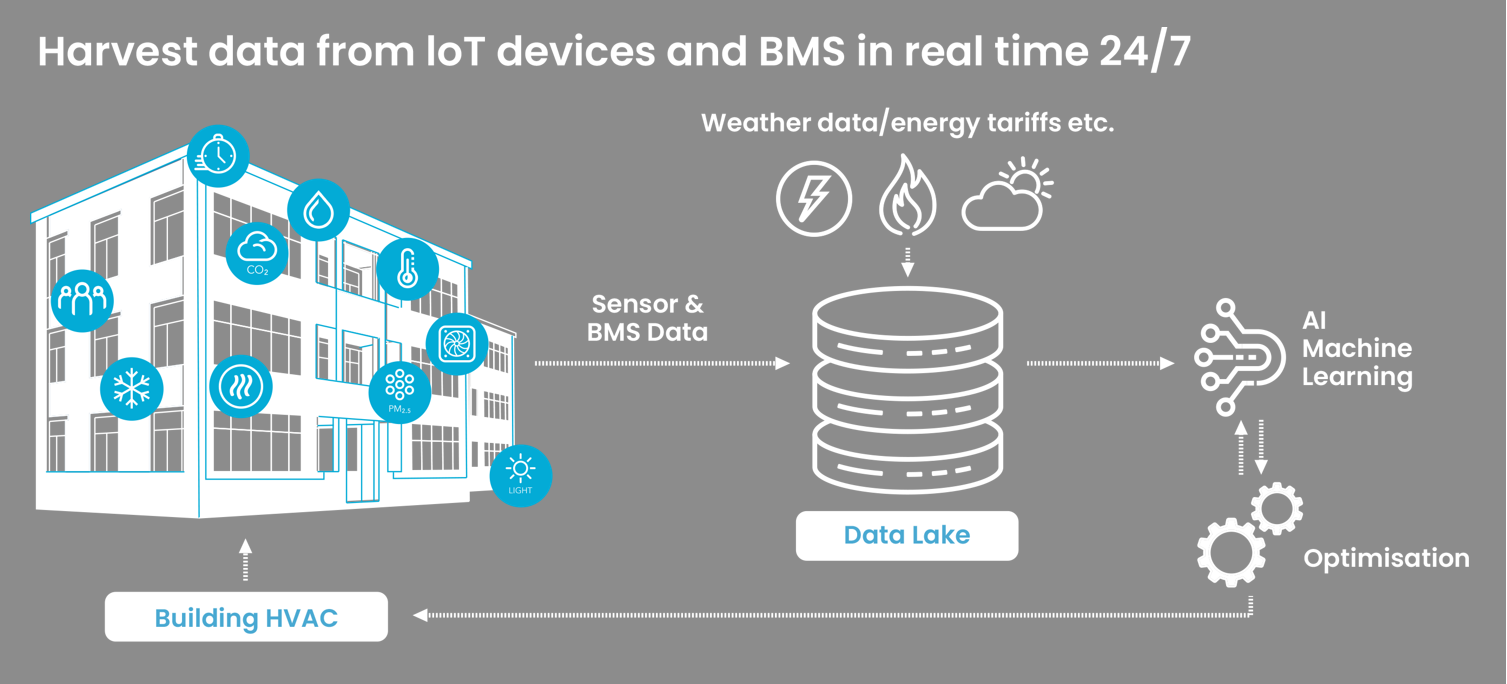Evotech launches its myBEMS AI technology to cut building running costs
Today at Healthcare Estates 2022, building performance company Evotech Technical Services, launched its state of the art myBEMS system that uses AI technology to harness data from building sensors, to automate commercial building HVAC systems and significantly cut running costs and carbon emissions.
Research shows that buildings account for around 40 percent of total energy use and are responsible for 33 percent of greenhouse gas emissions. A typical HVAC system accounts for around 39 percent of a building’s total energy consumption and it is estimated that around 75 percent of buildings in the EU are energy inefficient, meaning a large part of the energy used goes to waste.
With mMEES regulations now in force requiring buildings to be made increasingly energy efficient over the coming years, soaring energy prices and the increasing demand for green buildings, reducing the running costs of commercial buildings has become a necessity.
Mark O’Grady, Managing Director at Evotech Technical Services says, “Energy efficiency measures that target HVAC can achieve major savings; by optimising a building’s HVAC system, we can significantly reduce energy consumption, lower carbon emissions and improve the working environment for our clients, and in addition, the technology can be installed on a pay as you go basis, removing the need for large upfront costs, with Evotech’s myBEMS system paying for itself through monthly energy savings.”
Ageing BMS and HVAC control systems, often blighted with software glitches, uncalibrated and faulty sensors and switches and lack of user experience, are all too often to blame for a building’s HVAC plant running far longer than needed due to rogue heating, cooling and ventilation demands.

myBEMS uses non-linear control techniques instead of a rule-based approach, processing real-time weather data and forecasts, along with sensor inputs from the building such as occupancy, CO2, temperature, air quality and humidity from sensors and adjusting the system automatically. Constantly analysing the data inputs using advance machine learning algorithms, it notices the subtlest of changes in outdoor temperature, weather forecast and occupancy and adjusts the BMS and HVAC settings accordingly, monitoring multiple parameters, specifying set points, turning units on or off, and performing a number of other actions. All this happens absolutely autonomously, to keep building occupants comfortable whilst reducing energy consumption and carbon emissions.
As the ventilation, heating and cooling needs of a building are constantly changing, the control system is vital in ensuring the efficient running of HVAC plant to deliver the required occupant comfort. myBEMS is able to adapt to these changing circumstances, processing real-time data from IoT sensors and adjusting the HVAC system automatically. The system is able to analyse occupant behaviour and continually learns, modifying and improving its algorithms to provide deeper insight into how the building performs. The system can also track the number of occupants in the building, and the concentration of key air pollutants like VOCs and particulate matter (PM).
And the benefits are vast for both building occupants and building managers alike, with the system reacting quickly to the needs of occupants whilst significantly reducing energy bills and cutting carbon emissions as it does so. Typical annual energy savings of 20 - 40% can be achieved with a ROI less than 12 months.
For more information about myBEMS, Evotech’s smart AI technology for commercial HVAC systems, please visit www.evotech.co.uk/mybems or call our team on 0333 207 4245.
As published in Facilities Management Journal
Return to topLatest Articles
Breathing easier: the crucial role of classroom ventilation
Read More >Evotech supports local dancers to attend 2024 Dance World Cup
Read More >Evotech sponsors BIG North Pole Sea Ice Research Expedition
Read More >Evotech expands its footprint with new London hub
Read More >



